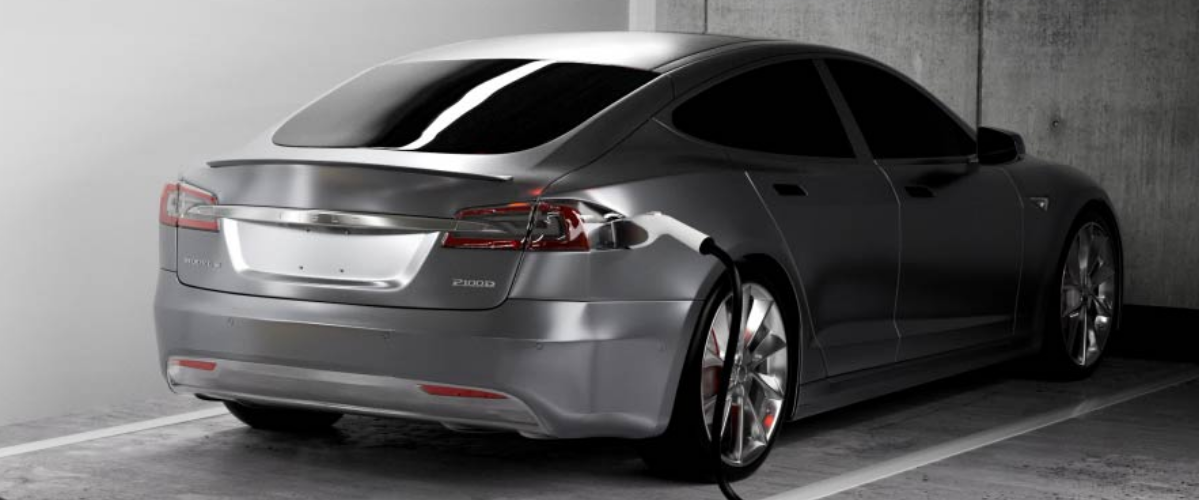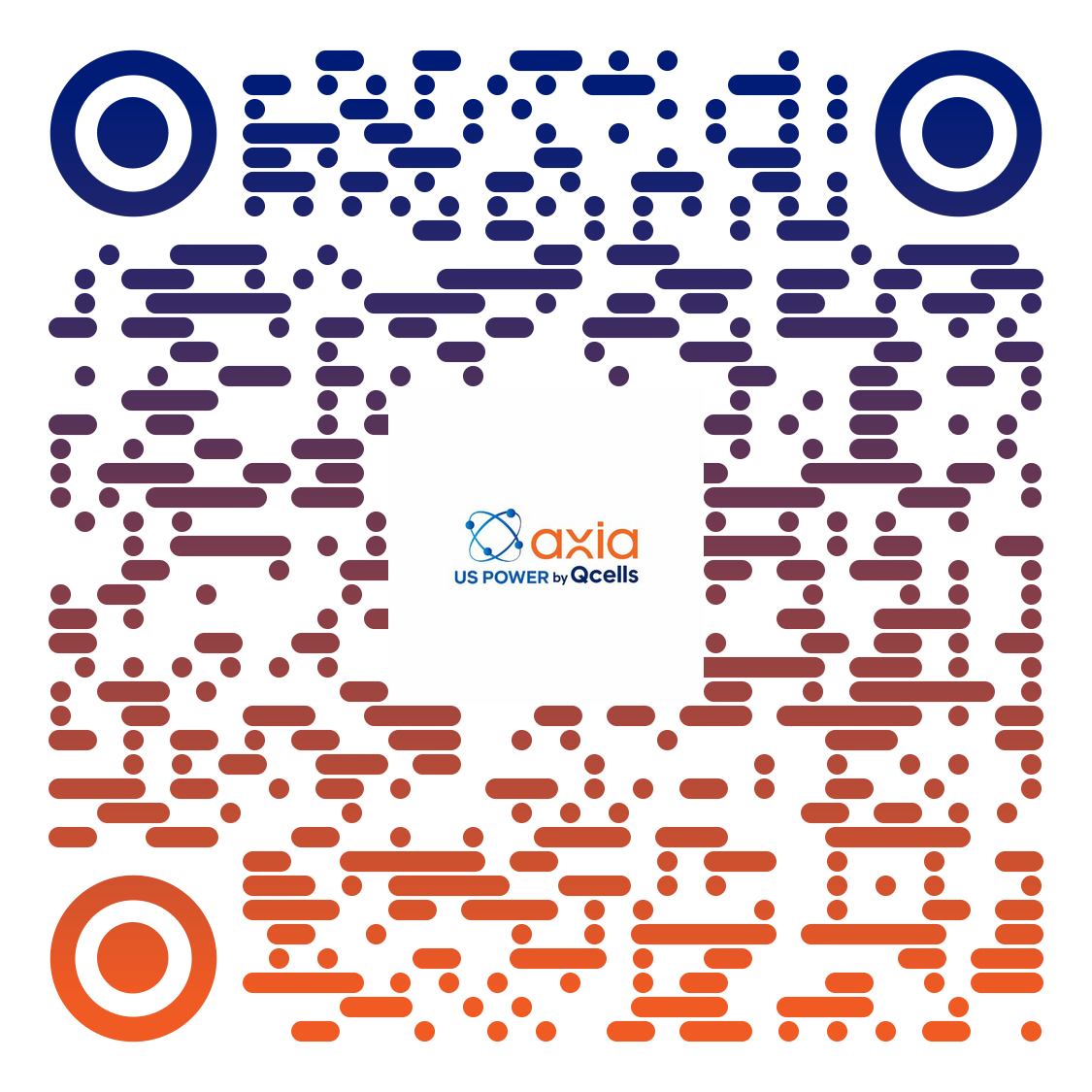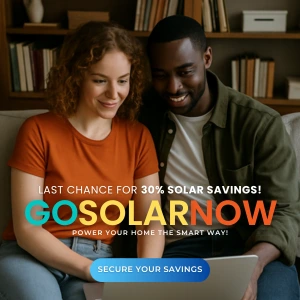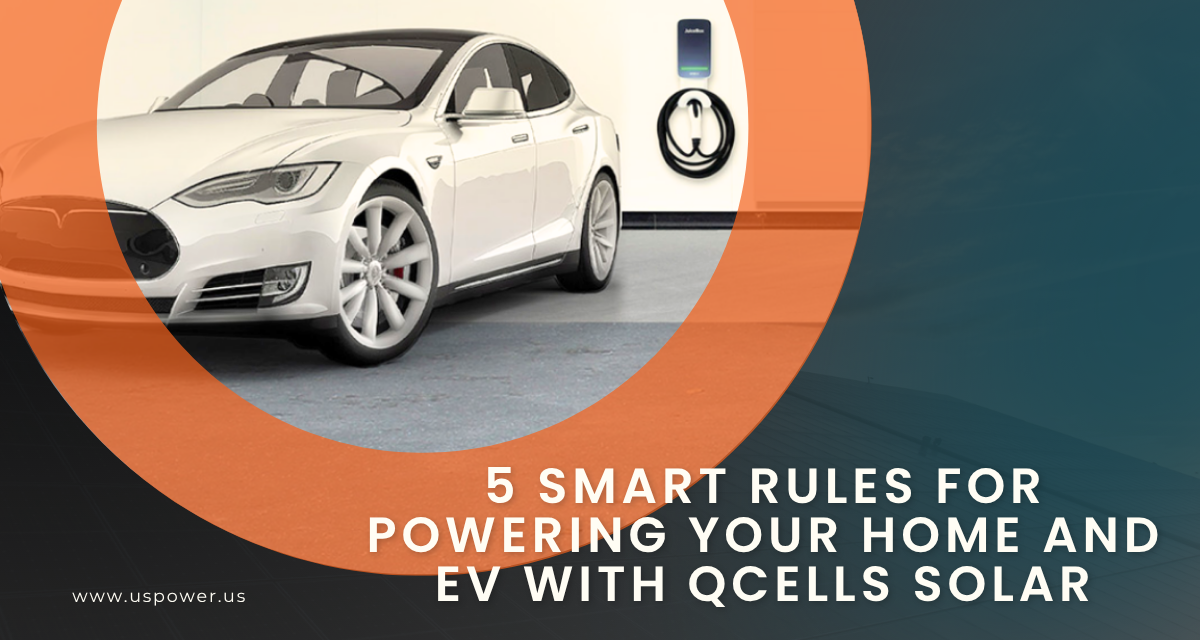Clearing America’s EV Roadblocks with Qcells and US Power

Solar and Roofing Advisor
Stay charged through outages and rate hikes with Qcells solar panels, battery backup, and EV chargers installed by US Power across Southern California.

On paper, the shift to electric vehicles (EVs) in the United States has looked unstoppable. They’re cleaner, more efficient, and increasingly capable. Yet, if you’re a homeowner in Southern California looking to adopt an EV—or integrate one into your household energy system—you likely sense something isn’t quite clicking.
Behind the broad headline of “more EVs” lies a complex set of barriers. The challenges aren’t just about the auto industry. They span infrastructure, grid reliability, policy, cost—and yes, the home energy equation. That’s where things get interesting for you as a Southern California homeowner.
Here at US Power, we see this every day: people want the clean-mobility future, but they’re juggling questions like: “Where can I charge reliably?” “What happens when the grid goes down?” “Can I make it affordable?” This article zeroes in on these questions — especially from the vantage point of solar + storage + EV charger solutions.
By the time you finish reading, you’ll see how the roadblocks are real — but also how you can clear many of them now, right here in Southern California.
Major Roadblocks in the EV Transition
Infrastructure & Range Anxiety
Though the EV industry is advancing, the requisite charging infrastructure has struggled to keep pace. In California, public and shared chargers have recently exceeded 201,180 ports, a massive number—but note this includes shared and workplace units, not just “any-time” public fast chargers.
Still, the pace of growth matters: fewer than 1 million public/shared chargers exist today, yet analysts project that by 2030 California will need ≈1 million to support the scale of EV adoption envisioned. That gap raises valid concerns: if you own a home in, say, Encino, and you depend on public charging for your next EV, you may experience long lines, unreliable stations, or simply inconvenient options.
Cost & Total Ownership
Owning an EV involves more than the car purchase. Charging, home upgrades, storage backup — each adds nuance. The cost of grid power in California is among the highest in the U.S. (≈ $0.29/kWh for many households) — meaning every extra kWh your EV draws is expensive if relying solely on the grid. Plus, public fast-charging still carries a premium compared to home charging.
Grid Reliability & Outages
Southern California faces unique stressors — wildfire risks, heatwaves, rolling blackouts, and the looming specter of large-scale grid disruptions. For many homeowners, the thought of “What if the grid goes down and my EV is dead?” is very real. In short: EVs + grid dependability = more uncertainty than many assume.
Policy Complexities & Incentive Shifts
Federal tax credits, state incentives, utility-rate changes — they’re all shifting. For example, the federal Residential Clean Energy Credit offers 30% of qualified clean energy property costs through at least 2032. But rebates for solar + storage in California are under more targeted programs today (see next section). Meanwhile, the EV purchase tax credits and charging infrastructure programs face headwinds and debate. These shifts create friction for homeowners trying to plan long term.
Slow EV Adoption Growth (Despite Demand)
In California, although EVs comprised about 25% of new car registrations in 2024, growth has plateaued, despite the ambition of reaching 35% by 2026. That signals that the “tipping point” is further out than many expect — and that the bridge between consumer interest and actual ownership still has gaps.
Is the Path Clearing — Especially Here in SoCal?
Good news: yes — many of those roadblocks are being addressed.
- California recently passed the 200,000+ public/shared charger milestone.
- The national residential clean-energy tax credit is still intact at 30%.
- The equipment side (panels, storage, chargers) is becoming more efficient and better suited for home integration.
- At the same time, homeowners like you are discovering a powerful combo: solar panels + battery storage + home EV charging. That combo allows you to sidestep many external constraints (grid outages, public charger wait times, utility-rate hikes) and lock in control.
In other words — the path is clearing just enough that those who act now (especially in the home-energy sphere) can gain a big advantage.
Why Your Home in Southern California Is a Unique Advantage
As a homeowner in the region — from Los Angeles to Riverside, Ventura to San Bernardino — you’re in one of the most favorable spots in America to make this transition work. Here’s why:
- Abundant sun: Solar systems are highly productive here.
- High utility rates: With grid power costing ~$0.29/kWh (and rising) in many cases, solar + storage offers strong savings.
- Outage/risk exposure: You likely know that fires, heat waves and rolling blackouts are part of the regional energy pulse. Having backup and charging at home is smarter than ever.
- EV-friendly state policy and local momentum: California leads U.S. EV adoption and infrastructure growth — setting trends, if not yet fully erasing challenges.
- Factory-direct pricing through local installer: At US Power, our exclusive partnership with Qcells gives you American-manufactured panels and direct pricing — reducing cost, increasing control.
How Solar + Storage + Home EV Charger Solve the Roadblocks
Let’s map how each major roadblock gets addressed when you implement all three at your home:
Roadblock: Infrastructure & Range Anxiety
Solution: With a home EV charger (Level 2) powered by your solar system, you effectively bypass most public-charging concerns. You wake up every morning with a full “tank” of solar-charged electricity at home. No long lines, no wait time, no uncertainty. And when you add battery storage, you’re insulated on days when the grid falters or the sun is low.
Roadblock: Cost & Total Ownership
Solution: Solar panels lower your grid energy bills. Storage lets you use more of your solar generation rather than exporting cheaply back to the grid. The EV charger uses that clean power. Thus, you reduce your “fuel” cost (which for EVs = electricity). The federal tax credit (30%) applies to solar + storage (commonly) and offsets many of the upfront costs.
Roadblock: Grid Reliability
Solution: On a high-outage zone day, your system still powers critical loads and charges your EV. You’re not stranded waiting for public infrastructure. A well-designed battery system from Qcells (e.g., their Q.HOME CORE) offers backup anytime.
Roadblock: Policy Complexities
Solution: While the policy landscape shifts, you’re making a tangible asset investment. Solar and storage appreciation plus controlled electric costs hedge future uncertainties (rate hikes, export rule changes). Because you partner with someone who handles compliance (US Power), much of the complexity is handled for you.
Roadblock: Slow Adoption / Consumer Doubt
Solution: You become the early adopter in your neighborhood. By choosing a trusted local installer — US Power — with American-made Qcells equipment and home EV charger integration, you signal the transition is real, practical—and accessible. Your neighbors see you doing it today, not “sometime in the future.”
Qcells Partnership & Why It Matters
Our exclusive factory-direct relationship with Qcells isn’t just a headline—it matters for you, the homeowner. Here’s why:
- Qcells manufactures in the U.S., with a facility in Dalton, Georgia, among others.
- Their modules are high-efficiency, built for reliability in heat and real-world conditions — important for Southern California’s climate.
- Qcells also provides integrated storage solutions (Q.HOME CORE) and EV-charger compatibility (Q.HOME EDRIVE) for full-home energy ecosystems.
- Factory-direct pricing means fewer middle-man markups. At US Power, this translates to a better value for you (lower cost, higher performance).
- By choosing an American-manufactured solution, you gain potential long-term support, local job impact, and supply-chain stability.
When you combine solar panels, battery storage, and an EV charger from this platform, you’re creating a home energy ecosystem — not just isolated parts. That ecosystem addresses the roadblocks in a holistic way.
Incentives & Cost-Savings You Shouldn’t Miss (2025 Update)
Here are the key programs for homeowners in California in 2025 — the ones you should know:
- The Federal Residential Clean Energy Credit: 30% off the cost of qualified solar (and now, storage) installations.
- The Self‑Generation Incentive Program (SGIP): Offers rebates for home battery storage paired with solar. For 2025, the program budget includes ~$280 million for residential solar + storage equity projects.
- The Disadvantaged Communities ‑ Single‑Family Solar Homes (DAC‑SASH) program: For low-income homeowners in qualifying communities, solar installation may be nearly zero out-of-pocket.
- California property-tax exclusion for active solar energy systems: Solar panels normally would raise the assessed value of your home, but this exclusion prevents that increase.
Note: The solar export policy (net metering) has become more complex. Under the current rules (NEM 3.0 and related programs), homeowners may not receive the same credit rate for exporting solar energy to the grid as prior generations.
In other words—you’ll want to size your system for self-consumption (especially if pairing with battery and EV charger) rather than relying on selling back to the grid. That’s significant for your home plan.
What One Southern California Homeowner Did
Meet Samantha & Carlos in Woodland Hills. They were considering an EV (they’d test-driven one), but worried about cost, charging, and what would happen when the grid went down. They partnered with US Power and chose a package:
- Qcells 10 kW solar system
- Qcells Q.HOME CORE 15 kWh battery
- Home Level 2 EV charger integrated into the system
Here’s how their life changed:
- Solar generation covers ~85% of their annual home usage in sunny months.
- During peak-summer heat waves and grid curtailments, their battery kicks in. They maintain cooling and TV/EV-charging without hitch.
- When they purchase the EV, they wake up most mornings with a “full tank” of home-generated electricity — no waiting, no trips to public chargers.
- Over 20 years, their payback is projected around 8–9 years (in line with California averages for solar + battery) thanks to high utility rates.
Now they feel ready for the EV era — on their own terms.
Actionable Steps for You (Don’t Wait)
If you live in Los Angeles, Ventura, Riverside, San Bernardino or nearby and you’re ready to clear your EV roadblocks, here’s a 5-step plan:
- Schedule a free consultation with US Power. We will evaluate your roof, your home-energy usage, your EV goals (or potential) and design a system.
- Ask about our Qcells factory-direct offer: high-efficiency American-made panels, streamlined pricing, and full system integration.
- Design for solar + storage + EV charger from Day 1: sizing the system so your EV charger is part of the ecosystem.
- Choose financing and leverage incentives: We break down the credits (federal, state, local) and show you real payback scenarios.
- Install and enjoy: Most homeowners begin seeing energy bill reductions immediately, gain resilience against outages, and wake up each day ready for the clean-mobility future.
Why Now Is the Right Time
- Utility rates are high and still rising—another reason to lock in a known cost via solar.
- EV adoption is accelerating (California recorded a record ~124,755 zero-emissions vehicles sold in Q3 2025 alone).
- Public charging is expanding—but if you wait for perfect infrastructure, you may experience the “last-mover” disadvantage.
- Incentives and policies are in motion but may shift — acting now lets you capture today’s benefits.
- Integrating now means you’re ready for your next EV without delaying the rest of your home-energy upgrade.
Yes — EVs in America face major structural roadblocks. But yes — the path is clearing — and you can be one of the winners in the shift. For homeowners in Southern California, the strategy is clear: instead of waiting on external infrastructure, take control at home. Combine solar panels, battery storage, and a home EV charger — ideally with a trusted installer like US Power and a premium brand partner like Qcells.
By doing so, you reduce your energy cost, increase your resilience, and position your home to fully support a future EV without compromise. Today, it isn’t just about buying an EV. It’s about owning your energy future. Let US Power help you make that transition with confidence.
Book your free solar + EV charger consultation with US Power today. Fill out our online form at uspower.us.
Your next EV deserves clean, efficient, and reliable power — right from your roof.
Disclosure: This article is for informational purposes and should not be considered tax or legal advice. Please consult with a qualified tax advisor regarding your eligibility for state and federal incentives.
Related Articles
Our Related Blogs
Qcells solar systems make home charging cleaner, faster, and more affordable.
Experience faster, high-quality solar installations backed by QCells reliability.
See why Qcells panels are the smartest choice for California home solar in 2025.
Our Solar and Roof Brand Partners








We empower communities and businesses to harness clean, renewable solar energy solutions that drive sustainable growth.
Ready to Own Your Power? Call us today!
818-650-8010
Copyright © 2025 US Power - Axia by QCells. All Rights Reserved.
Privacy is important to us, so you have the option of disabling certain types of storage that may not be necessary for the basic functioning of the website. Blocking categories may impact your experience on the website.
Essential
These items are required to enable basic website functionality.
Personalization
These items allow the website to remember choices you make (such as your user name, language, or the region you are in) and provide enhanced, more personal features.
Marketing
These items are used to deliver advertising that is more relevant to you and your interests.
Analytics
These items help the website operator understand how its website performs, how visitors interact with the site, and whether there may be technical issues.
We and our third-party partners use cookies and other technologies to enhance and track your experience on this site, conduct analytics, and personalize marketing to you. By using the site, you agree to our use of these technologies, including recording and monitoring your interactions with the site.
Get an instant solar estimate using satellite!









